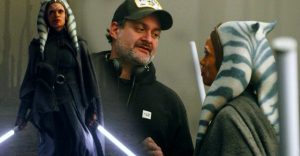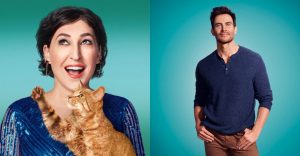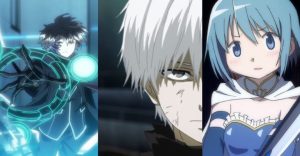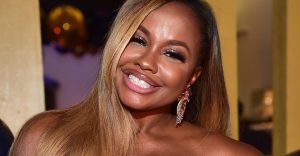20 Connections Fantastic Beasts Makes To Harry Potter

The Harry Potter series is one of the most loved and lucrative movie franchises of all time. The otherworldly success of the book and movie series meant that there would always be demand for further additions to the franchise.
Fortunately for fans, JK Rowling started work on the Fantastic Beasts series which would act as a prequel to the Harry Potter series, taking place from the 1920s through to 1945. Fans often wonder, is Fantastic Beasts related to Harry Potter directly? Due to the fact that Fantastic Beasts is a prequel, there are several connections to the Harry Potter series, from characters to subtle references.
Updated on March 30th, 2022 by George Chrysostomou: With a brand new Fantastic Beasts film just around the corner, the comparisons between the two franchises continue to become ever more apparent. While certain elements are still very familiar, on a larger level these narrative choices continue to rhyme much like poetry, no matter which movie series is being discussed.
The Wizarding Wars

The war between the Muggles and the Wizarding community has continued to rage on, even after the apparent defeat of the evil Grindelwald. The Fantastic Beasts movies have begun to show the ongoing conflict between those who see magic wielders as superior and those protecting No-Majs.
The Harry Potter saga thematically continues that same argument, with Grindelwald’s forces getting replaced by Voldemorts. The idea of blood supremacy is brought into the mix, with Mudbloods supposedly deemed just as bad as the average Muggle. Ultimately, the fight between good and evil, with the non-wizarding world caught up in the middle will seemingly continue on a cycle.
Journalism

Journalism within this fictional world seems to have just as much power as it does in reality. The Harry Potter movies investigate the power of the newspaper and gossip columns, with the lies of the Daily Prophet and Rita Skeeter’s own works becoming a major point of influence.
For Fantastic Beasts, although classic media like that within the magical community is still prevalent, the movies focus more on Muggle journalism and how the newspapers of New York could contribute to the conflict between wizards and those without powers.
The Room Of Requirement

While a return to Hogwarts will be discussed further later, the Room Of Requirement is a much larger symbol in the context of this story. Within Harry Potter the Room was essentially a way for Hogwarts to fight back, aiding the students in defending their home against Umbridge and later the Death Eaters.
In Fantastic Beasts, it appears to have quite a similar function, with the Room of Requirement emerging to help Newt and his team combat the rising darkness brought on by Grindelwald. Each time the Room has essentially become a way for the magical school to express its own views on emerging events.
Magical Beasts

It seems pretty obvious considering the Fantastic Beasts franchise is built on the back of magical creatures, but both movie franchises have a huge role for these animals to play. In Harry Potter, audiences got to know Thestrals, Dragons, and even Buckbeak the Hippogriff.
Fantastic Beasts had to step it up a notch and has therefore expanded the range of magical creatures that had previously been seen on screen. It’s a pretty complex role to take on, caring for these beasts, but Newt has taken it in his stride and is developing many of the techniques that are later taught at Hogwarts.
Polyjuice Potion

Polyjuice Potion has become a vital tool to use as a plot twist in both franchises. In Harry Potter not only did Harry, Ron, and Hermione employ this serum in order to break into the Slytherin Common Room, but Barty Crouch Jr. would later drink the potion to turn into Mad-Eye Moody.
Fantastic Beasts used Polyjuice much in the same way as Grindelwald spent his time masquerading as Percival Graves so that he could infiltrate MACUSA and discover a source of massive power. It was a reveal that still caught the audience by surprise, demonstrating the storytelling worth of this device.
Returning To Hogwarts

It’s a simple connection but one that Fantastic Beasts really wanted to drive home. The sequel film saw audiences return to Hogwarts for the first time in a while, capitalizing on the nostalgia of the location. This meant that fans could see a little bit more of the history of the school.
Architecturally it’s mostly the same and even the curriculum appears to be similar. However, the focus on the school continues to demonstrate and build up the prestige of the location and also acts as a paradox to Harry’s less peaceful time at the educational facility, raising the stakes for his adventures.
Dumbledore’s History

Dumbledore is a major focus of both series and his history is explored a little bit more during Newt’s days in the Wizarding World. Indeed, in Harry Potter, Harry and his friends learn about Dumbledore’s earlier years thanks to an explosive book from Rita Skeeter.
Some of the events of this book actually play out or are at least referenced in Fantastic Beasts. Dumbledore’s relationship with Grindelwald is an especially important factor, considering he will not face his former lover and instead sends Newt on the mission, due in part to their blood pact.
School Rivalries

The Harry Potter saga makes a big deal out of the rivalries between the competing schools throughout Europe. In fact, every few years there’s even a competition between these schools, with Hogwarts, Beauxbatons, and Durmstrang all taking part in the Triwizard Tournament.
This sense of international competition continues when Newt has to argue with his American allies over the best school for witches and wizards. His compatriots appear to believe that Ilvermorny is actually superior, harking back to those Harry Potter rivalries.
The Ministry Of Magic

The Ministry Of Magic is a vital part of the wizarding community in HarryPotter, and Fantastic Beasts reveals that there are other institutions across the world that serve a similar purpose. The Magical Congress of the United States of America is the US equivalent.
Their power within the international political realms is clear to see and the Ministry of Magic actually gets a nod during some of MACUSA’s global meetings. Matching the UK and US systems respectively, the Ministry has a Prime Minister, MACUSA has a President.
Diagon Alley

Although the characters of Fantastic Beasts never visit Diagon Alley in the movies, there are clear connections between the famous London spot and the other locations they adventure to across the globe. It appears every major city has a magical high street much in the same way.
Paris has its own underground community that even features an impressive magical circus, while New York has its own magical underbelly complete with Goblin-run bars. It’s unclear which magical community was built up first and inspired the rest but there’s still a lot to learn about Diagon Alley.
Leta Lestrange

Leta Lestrange was Theseus Scamander’s fiancée, yet the love interest of his brother, Newt Scamander. While she appeared to meet her end in the most recent movie, her family is still of huge importance to the Harry Potter plots.
The Lestrange family is home to some of the most iconic characters in the Harry Potter canon. Bellatrix Lestrange is the most famous member of the family, but the family is also closely related to the Malfoy, Tonks, and even Lupin families, resulting in a number of Harry Potter links to Fantastic Beasts.
Newt Scamander Textbook

One of the more subtle nods to the Harry Potter universe is the fact that the movies follow the author of one of the most read books in the Wizarding World. The book in question, Fantastic Beasts and Where to Find Them was published in 1927 and would go on to become a standard textbook at Hogwarts School of Witchcraft and Wizardry for decades.
In Harry Potter’s first year at Hogwarts, he needed a copy of the book in order to attend the school. Perhaps this was for his Defense Against the Dark Arts class, as students cannot take care of magical creatures until their third year.
Obscurus Books

Fantastic Beasts and Where to Find Them also has another subtle connection to Harry Potter. The publishing house behind the release of the textbook was named Obscurus Books. This is a clear connection to the prominent role of Obscurials in the Fantastic Beasts series.
What is most interesting about this is that the publisher of the textbook has been Obscurus Books since JK Rowling released Fantastic Beasts and Where to Find Them in 2001. This would have given fans an early clue as to when Fantastic Beasts took place in the Wizarding timeline considering Newt’s run-in with an Obscurus and the creation of the company.
Nicholas Flamel

The second Fantastic Beasts movie introduced far more references to the Harry Potter movies than its predecessor. Aside from the obvious inclusions such as one of the school’s most beloved teachers in Dumbledore and Hogwarts, there was a reference to the first movie in the Harry Potter series.
Nicholas Flamel, the creator of the Philosopher’s Stone, appeared in the Crimes of Grindelwald. He is clearly ancient in the movie, with his hands breaking under the slightest pressure.
The Music

When Hogwarts is shown again in the Crimes of Grindelwald, it is already an incredibly nostalgic experience. Fans hadn’t seen the school for several years, and even then, it was during a time of conflict.
In this movie, however, the audience is treated to the site of Hogwarts while the iconic “Hedwig’s Theme” by John Williams plays in the background. For many viewers, this is the soundtrack to their childhood, and hearing this while gazing at an establishing shot of Hogwarts was a fantastic experience and great connection to the Harry Potter world.
Nagini

One of the biggest fan theories about the Crimes of Grindelwald after the release of the first trailer was that Nagini would make an appearance. In the movie, Nagini is a Maledictus, an individual who suffers from a blood curse that is passed down on the female side of the family.
The curse will eventually result in the individual turning into an animal permanently. In the case of Nagini, she became a snake and, though the reason is yet to be revealed, joined Voldemort after working alongside Grindelwald for years.
Professor McGonagall

This one is almost certainly controversial. In the Crimes of Grindelwald, fans see a young professor who is referred to by Dumbledore as “Professor McGonagall.” While this was clearly meant to be everyone’s favorite Transfiguration professor, there are issues with her appearance in the movie.
The most notable issue is the fact that Minerva McGonagall wasn’t born until 1935 and did not start teaching at Hogwarts until 1956.
The Deathly Hallows

The Deathly Hallows are some of the most powerful magical items in the world of Harry Potter. The final book in the series was heavily based around the search for them, as Voldemort wished to find the Elder Wand, and even Dumbledore was obsessed with the Hallows in his youth.
Several references to the Hallows appear in the movie. In the first film, Grindelwald (concealed as Percival Graves) gave a Hallows necklace to Credence. Further, Grindelwald clearly possesses the Elder Wand in the second movie.
Defense Against The Dark Arts

The Defense Against the Dark Arts classroom is one of the most iconic classrooms in Hogwarts. It was the site of the hilarious Gilderoy Lockhart interactions and it was the place where Lupin delivered his iconic Boggart class. As if to reference this Lupin class, Crimes of Grindelwald shows Dumbledore teaching this same Boggart class.
While this is undoubtedly a reference to the Harry Potter movies, it begs the question of why Dumbledore is teaching this class as he was the Transfiguration professor before he became headmaster.
The Mirror Of Erised

The Mirror of Erised first appeared in Harry Potter and the Philosopher’s Stone and was an important element in the first movie. The mirror reveals the deepest desire of the person standing in front of it. Harry Potter saw his family, Ron Weasley saw himself being recognized for his achievements, and Dumbledore told Harry that he saw himself with some woolen socks.
However, this was shown to be a lie in Crimes of Grindelwald. It is clear that Dumbledore sees the Dark Wizard in the mirror, a hint toward their adolescent romance.
About The Author


















